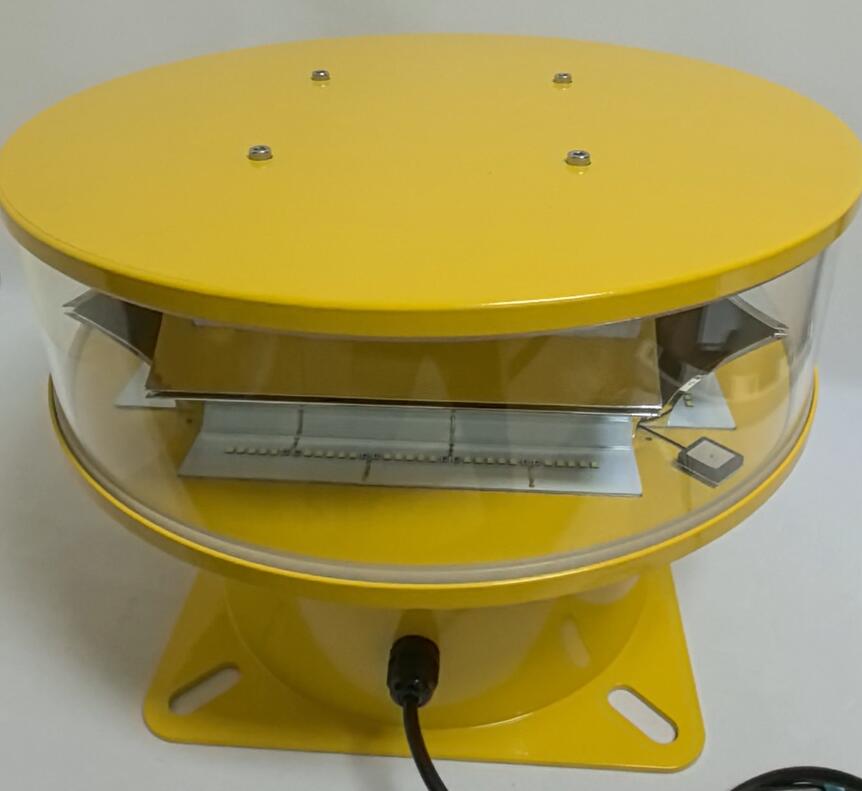Tower Aviation Light: Lighting the Way to Safer Skies
In the vast and intricate world of aviation, safety is the cornerstone of every operation. Among the myriad tools and technologies designed to protect aircraft and passengers, the Tower Aviation Light plays a pivotal role. These specialized lights are essential for marking tall structures like communication towers, wind turbines, and skyscrapers, ensuring they are visible to pilots and reducing the risk of collisions. As aviation continues to grow, the importance of Tower Aviation Lights cannot be overstated.
What is a Tower Aviation Light?
A Tower Aviation Light is a high-intensity lighting system installed on tall structures to make them visible to aircraft, particularly during nighttime or low-visibility conditions. These lights are designed to meet strict aviation safety standards, ensuring they provide clear and consistent signals to pilots. Tower Aviation Lights are typically used on communication towers, wind turbines, and other structures that could pose a hazard to low-flying aircraft.
Why Tower Aviation Lights Are Essential
The primary purpose of Tower Aviation Lights is to enhance visibility and prevent collisions. Here’s why they are indispensable in modern aviation:

Collision Prevention: Tall structures like communication towers and wind turbines can be hazardous to aircraft, especially during takeoff and landing. Tower Aviation Lights provide a clear visual warning, helping pilots navigate safely.
Regulatory Compliance: Aviation authorities, such as the FAA (Federal Aviation Administration) and ICAO (International Civil Aviation Organization), mandate the use of Tower Aviation Lights on structures exceeding certain heights. Compliance with these regulations is crucial for avoiding penalties and ensuring safety.
| Tower Aviation Lights |
| Tower Aviation Light |
Versatility: Tower Aviation Lights are used across various industries, including telecommunications, renewable energy, and construction. Their adaptability makes them a universal solution for marking tall structures.
Enhanced Safety in All Conditions: Modern Tower Aviation Lights are equipped with advanced LED technology, ensuring visibility even in adverse weather conditions like fog, rain, or snow.
Key Features of Modern Tower Aviation Lights
The evolution of Tower Aviation Lights has brought about advanced features that make them more efficient and reliable. Here are some standout characteristics:
High-Intensity LEDs: Modern Tower Aviation Lights use high-intensity LEDs that provide bright, long-lasting illumination. These LEDs are energy-efficient and require minimal maintenance.
Durability: Designed to withstand harsh environmental conditions, Tower Aviation Lights are built to last. They can endure extreme temperatures, heavy rainfall, and strong winds without compromising performance.
Solar-Powered Options: For remote or off-grid locations, solar-powered Tower Aviation Lights offer a sustainable and cost-effective solution. They harness solar energy during the day and provide uninterrupted illumination at night.
Customizable Lighting Patterns: Different structures require different lighting configurations. Modern Tower Aviation Lights come with customizable settings, allowing users to adjust flash patterns and intensity based on specific needs.
Applications of Tower Aviation Lights
The use of Tower Aviation Lights spans across various industries and structures. Here are some of the most common applications:
Communication Towers: With the rapid growth of mobile networks, communication towers are becoming increasingly prevalent. Tower Aviation Lights ensure these towers are clearly visible, reducing the risk of collisions.
Wind Turbines: As wind farms expand globally, marking these tall structures is essential to prevent collisions with low-flying aircraft. Tower Aviation Lights provide a reliable solution for enhancing visibility.
High-Rise Buildings: In urban areas, skyscrapers and tall buildings can interfere with flight paths. Installing Tower Aviation Lights on these structures helps pilots navigate safely, especially during takeoff and landing.
Bridges and Dams: Large infrastructure projects like bridges and dams also require effective marking. Tower Aviation Lights provide a reliable solution for enhancing the visibility of these structures.
The Future of Tower Aviation Lights
As technology continues to advance, the future of Tower Aviation Lights looks brighter than ever. Innovations such as smart lighting systems, integrated sensors, and remote monitoring capabilities are set to revolutionize the industry. These advancements will not only improve safety but also make maintenance and management more efficient.
Moreover, the growing emphasis on sustainability is driving the adoption of eco-friendly solutions like solar-powered Tower Aviation Lights. These developments align with global efforts to reduce carbon footprints and promote renewable energy sources.
In the realm of aviation safety, Tower Aviation Lights are more than just a regulatory requirement—they are a vital tool for protecting lives and ensuring the smooth operation of air travel. Their ability to enhance visibility, prevent collisions, and adapt to various industries makes them an indispensable asset.
Whether you’re managing a communication tower, a wind farm, or a high-rise building, investing in high-quality Tower Aviation Lights is a proactive step toward creating a safer and more secure aviation environment. Illuminate the skies with confidence, knowing that Tower Aviation Lights are guiding the way to a safer future.
